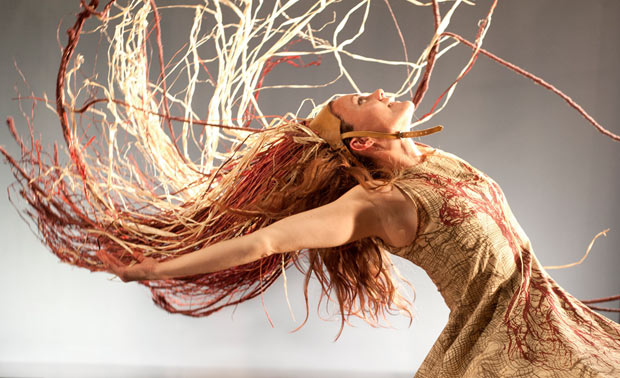
© Ravi Deepres. (Click image for larger version)
balletLORENT
Rapunzel
Edinburgh, Festival Theatre
19 Sep 2014
www.balletlorent.com
www.edtheatres.com
Earthy and gothic character-driven dance from balletLORENT
When we think of modernising a fairytale, it’s usually in terms of redressing an imbalance in the lead roles: empowering the heroine or changing the gender of the romantic pair. But in the case of balletLORENT’s Rapunzel – conceived by Artistic Director Liv Lorent and storylined by Carol Ann Duffy – it’s the figures whose suffering is often overlooked that have been brought centre stage: the parents.

© Ravi Deepres. (Click image for larger version)
In Duffy’s text – part of the programme notes, a great touch because its language beckons you back for multiple reads – the couple who make their Faustian pact with the witch form the heart of the tale, framing the Grimms’ famous story of the locked-up girl with the long hair.
After the husband (they are known only as ‘husband’ and ‘wife’) is caught stealing rampion from the witch-next-door’s garden to sate the wife’s cravings, he bargains away their child in return for all the rampion she can eat. The resulting pain of loss is woven into a tale-within-a-tale by the wife, recalling the resourcefulness of other mythical women who turned their suffering into creativity (Penelope’s shroud or Scheherazade’s storytelling). It’s a frame that benefits the piece in multiple ways – it lends flesh to the simple Grimm version, fills the stage as frame and story visually intertwine, and gives way for a more realistic take on a happy ending.
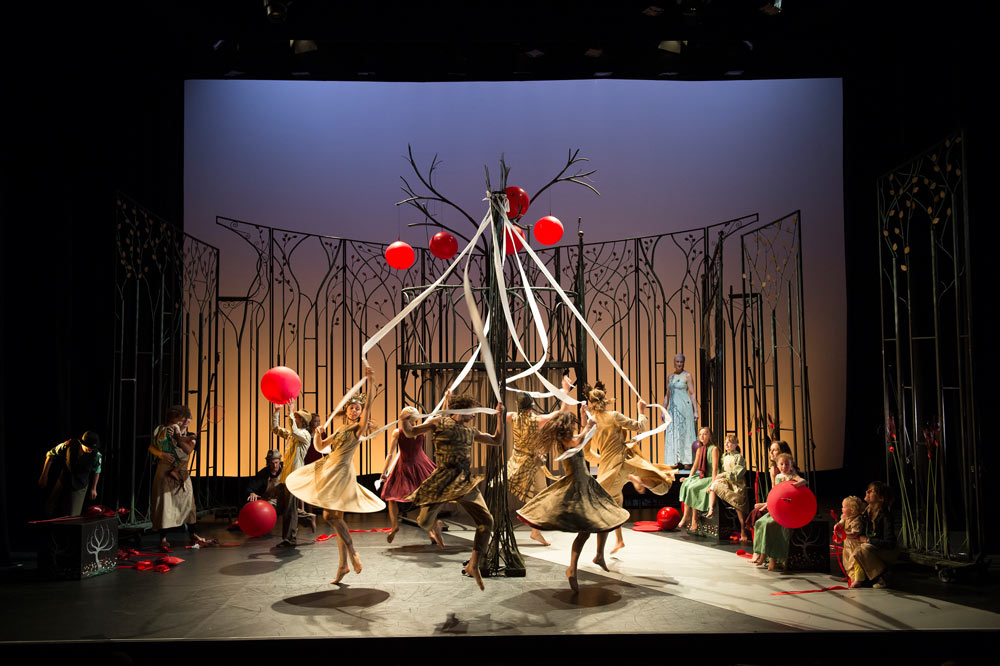
© Ravi Deepres. (Click image for larger version)
Phil Eddolls’s set and Michele Clapton’s costumes play off the spiky lushness of Duffy’s words beautifully. Wrought iron and leaves, paper and ribbons, cotton printed with trees; the effect is both earthily pagan and drippingly gothic. Murray Gold’s score plays similarly with medieval riffs, electric voices and bold sweeping drama.
Character and mime lead choreographer and director Lorent’s storytelling, creating a crystal-clear narrative that her intended all-ages audience will have no trouble following. But in the first half the dance feels frustratingly understated. Caroline Reece’s witch is made up of classical spindliness and formidable majesty (and her stately roller-skating is a magical touch), but while she has more dance-time than most, even these passages are curtailed to a few flourishes or swoops.
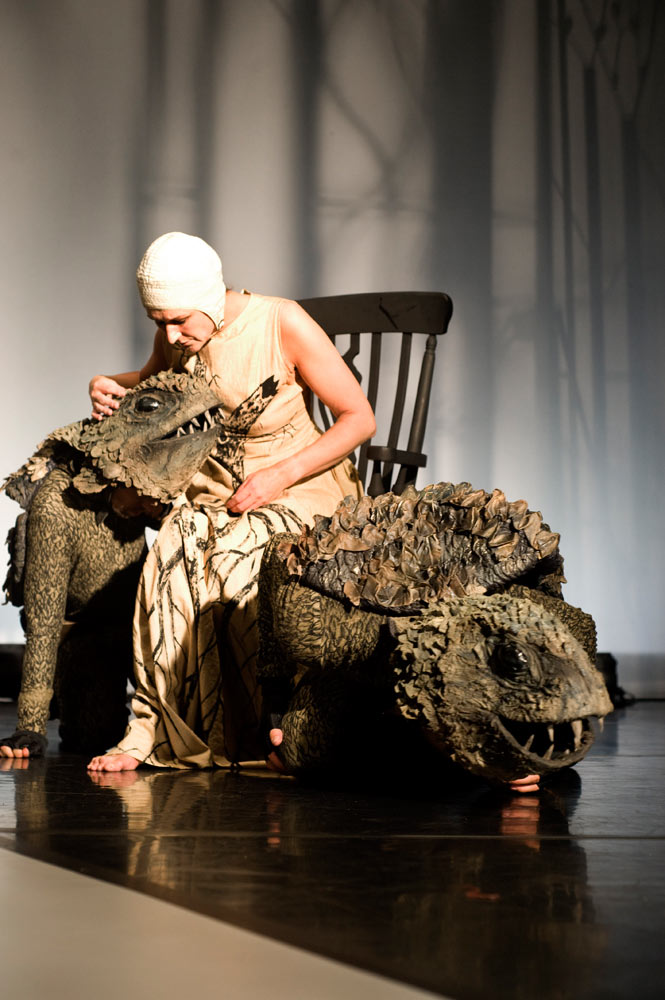
© Ravi Deepres. (Click image for larger version)
Post-interval, more focus is given to dance and the story feels richer for it. Natalie Trewinnard as Rapunzel clambers and loops through her tower room, more feral child with tangles of blood-red hair than winsome locked princess. Spinning is used as a recurring motif of freedom by the couples outside the tower. And when Rapunzel and Prince are cast out as lost wanderers, both king and queen and peasant man and wife take respective sides of the stage, mirroring one another’s grief across class boundaries, the teetering en pointe moves of the women creating tremors of vulnerability and strength in the face of great pain.
This latter is a moment where Lorent’s choreography takes on a truly original vocabulary, proving dance’s storytelling worth when capturing nuance. But it’s also a glimpse of the potential that could have been, had dance been used to springboard off Duffy’s words rather than go through the motions of narrative.






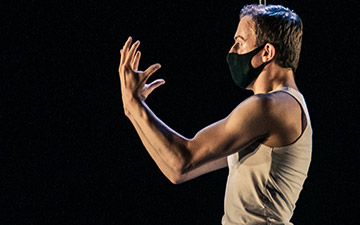


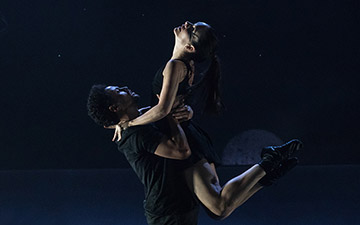
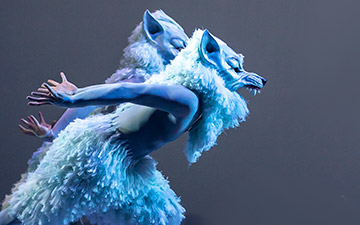
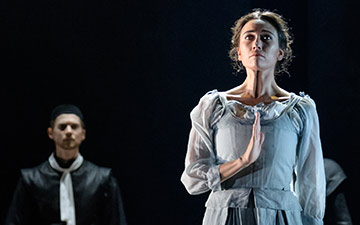

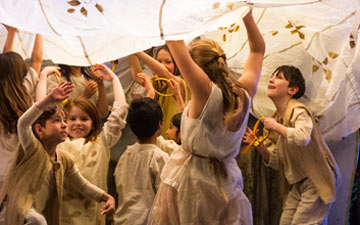
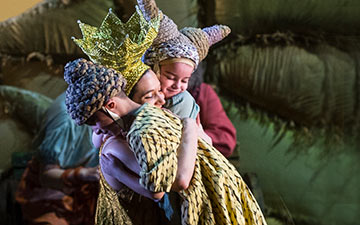
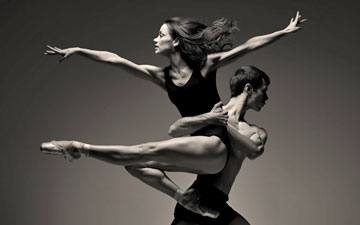

You must be logged in to post a comment.